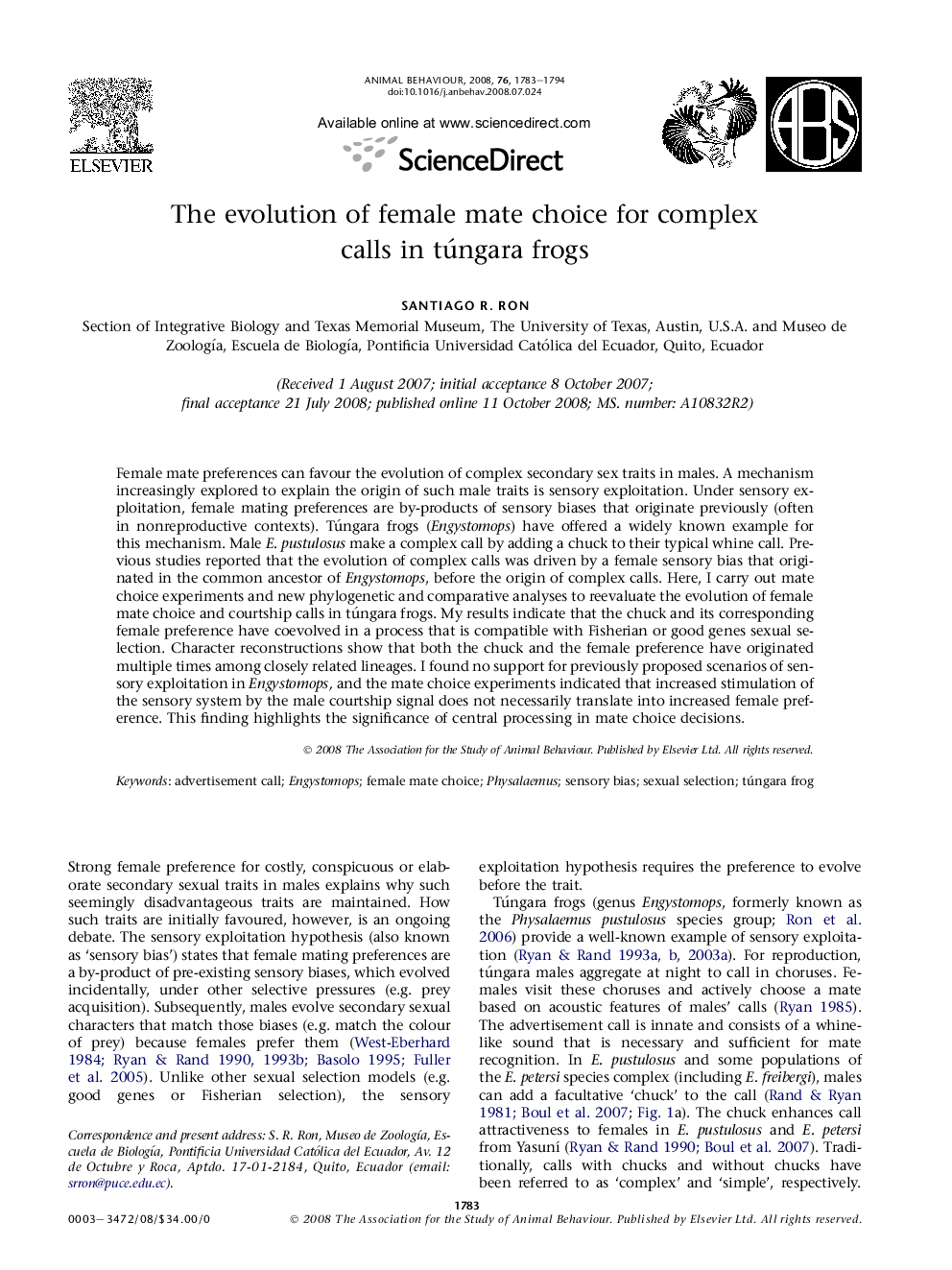| کد مقاله | کد نشریه | سال انتشار | مقاله انگلیسی | نسخه تمام متن |
|---|---|---|---|---|
| 2418483 | 1104348 | 2008 | 12 صفحه PDF | دانلود رایگان |

Female mate preferences can favour the evolution of complex secondary sex traits in males. A mechanism increasingly explored to explain the origin of such male traits is sensory exploitation. Under sensory exploitation, female mating preferences are by-products of sensory biases that originate previously (often in nonreproductive contexts). Túngara frogs (Engystomops) have offered a widely known example for this mechanism. Male E. pustulosus make a complex call by adding a chuck to their typical whine call. Previous studies reported that the evolution of complex calls was driven by a female sensory bias that originated in the common ancestor of Engystomops, before the origin of complex calls. Here, I carry out mate choice experiments and new phylogenetic and comparative analyses to reevaluate the evolution of female mate choice and courtship calls in túngara frogs. My results indicate that the chuck and its corresponding female preference have coevolved in a process that is compatible with Fisherian or good genes sexual selection. Character reconstructions show that both the chuck and the female preference have originated multiple times among closely related lineages. I found no support for previously proposed scenarios of sensory exploitation in Engystomops, and the mate choice experiments indicated that increased stimulation of the sensory system by the male courtship signal does not necessarily translate into increased female preference. This finding highlights the significance of central processing in mate choice decisions.
Journal: Animal Behaviour - Volume 76, Issue 6, December 2008, Pages 1783–1794